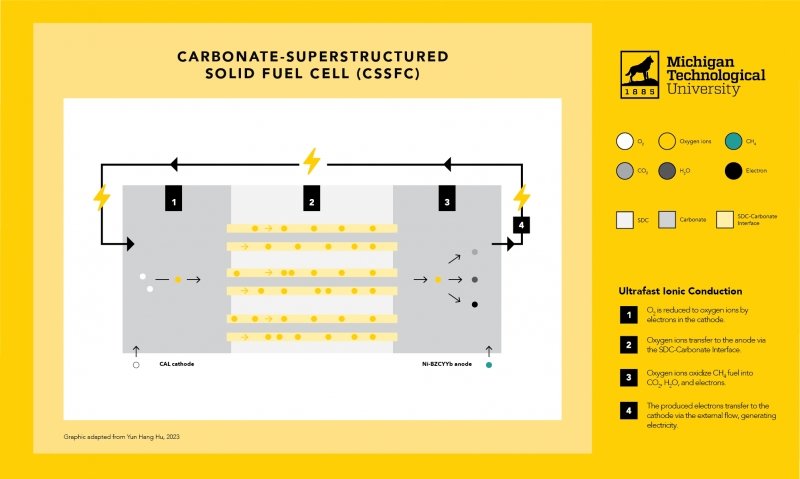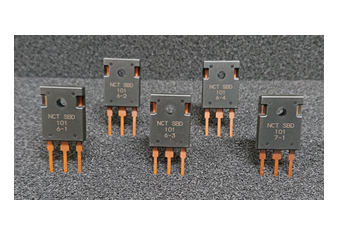2023-04-05 ミシガン工科大学
 Ultrafast ionic conduction in a carbonate-superstructured solid fuel cell created by Michigan Tech researchers.
Ultrafast ionic conduction in a carbonate-superstructured solid fuel cell created by Michigan Tech researchers.
この新しい炭酸塩超構造固体燃料電池(CSSFC)は、燃料が柔軟で、他の種類の燃料電池よりも低い運転温度でより高い耐久性とエネルギー変換効率を提供します。
<関連情報>
- https://www.mtu.edu/news/2023/04/an-energy-breakthrough-tech-researchers-create-new-type-of-fuel-cell.html
- https://www.pnas.org/doi/abs/10.1073/pnas.2208750119
炭化水素燃料を使用した炭酸ガス超構造固体燃料電池 Carbonate-superstructured solid fuel cells with hydrocarbon fuels
Hanrui Su, Wei Zhang, and Yun Hang Hu
Proceedings of the National Academy of Sciences Published:October 3, 2022
DOI:https://doi.org/10.1073/pnas.2208750119
Significance
Solid oxide fuel cells (SOFCs) are a promising energy conversion system due to their high energy efficiency and fuel flexibility. Lowering the operating temperature of SOFCs can minimize material degradation and enable the use of less expensive materials. However, both electrolyte and electrode resistances increase exponentially with decreasing operation temperature. This work demonstrates a carbonate-superstructured solid fuel cell (CSSFC) by in situ generating superstructured carbonate on the surface of porous electrolyte and the interface between electrodes and electrolyte, dramatically enhancing the oxygen ion conductivity and power density with hydrocarbon fuels at lower operating temperatures.
Abstract
A basic requirement for solid oxide fuel cells (SOFCs) is the sintering of electrolyte into a dense impermeable membrane to prevent the mixing of fuel and oxygen for a sufficiently high open-circuit voltage (OCV). However, herein, we demonstrate a different type of fuel cell, a carbonate-superstructured solid fuel cell (CSSFC), in which in situ generation of superstructured carbonate in the porous samarium-doped ceria layer creates a unique electrolyte with ultrahigh ionic conductivity of 0.17 S⋅cm−1 at 550 °C. The CSSFC achieves unprecedented high OCVs (1.051 V at 500 °C and 1.041 V at 550 °C) with methane fuel. Furthermore, the CSSFC exhibits a high peak power density of 215 mW⋅cm−2 with dry methane fuel at 550 °C, which is higher than all reported values of electrolyte-supported SOFCs. This provides a different approach for the development of efficient solid fuel cells.



